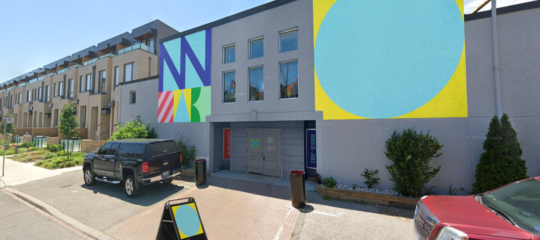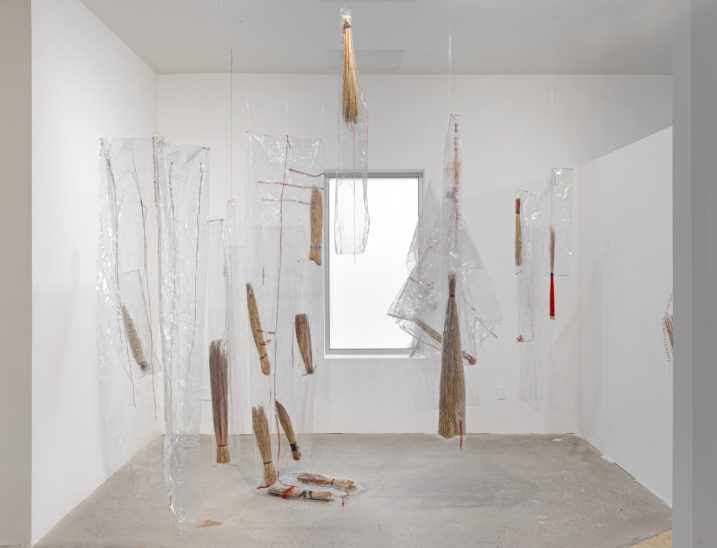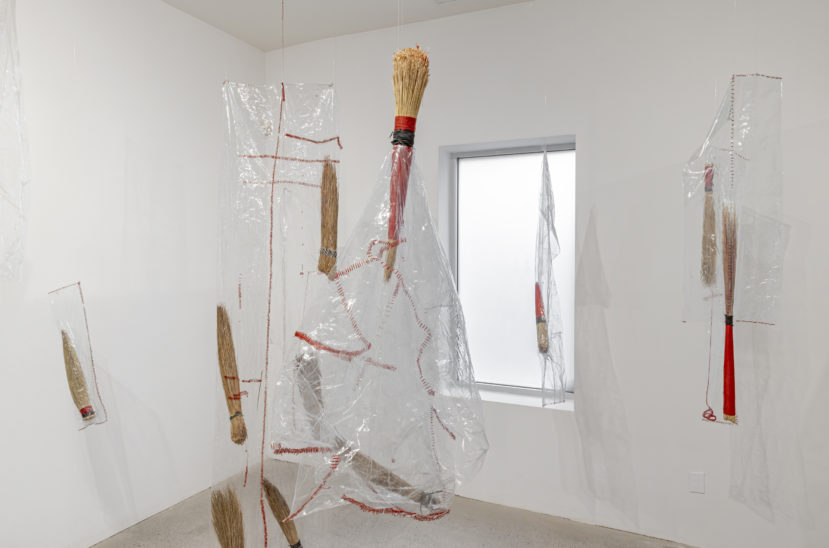Anne Zanele Mutema’s practice invites us to consider alternative belief systems through the idea of an Event defined for her as a phenomenon located at a single point in time in the context of self, culture and history.
Systemic Necropolis is an installation engaged in a philosophical inquiry on the nature of the thing – whether we are given our identities by the objects that surround us, the use-value they provide or whether they in fact afford identities to us.
In her own words:
“[Systemic Necropolis] is a glorified memorial site for my memories. The mutsvairo (brooms) functions as a time capsule, an object embodying an Event. The red string represents a bloodline that connects the memories. Stitching serves as a cathartic process in my life. The [plastic] cocoons are different from one another just as
each memory embodies and occupies a different space, a distinct point in time…Systemic Necropolis is a congregation/coming together of the Event.”
The broom in Shona culture is often seen as an ordinary but sacred object, one that is not left outside at night, that is hung or kept carefully in a designated place in the home. It is also used by n’angas (traditional healers) as a tool for cleansing energies. In this work, Mutema uses the ordinary to explore and build upon the memory of an Event, and to understand the relevance of the human body beyond presenting it figuratively.
Ngozi: We Might Listen for the Shimmerings is organized by Chiedza Pasipanodya, as a part of the 2022 Curatorial Fellowship program, made possible by the generous support of TD Bank Group through the TD Ready Commitment, and with support from the Toronto Arts Council and the Ontario Arts Council. Ngozi features the work of Anne Zanele Mutema, Buhlebezwe Siwani, and Timothy Yanick Hunter.
Audio Didactic:
Bio
Anne Zanele Mutema (born in 1988, Harare, Zimbabwe; lives and works in Harare) is a conceptual installation artist preoccupied with ideas of space, memory and phenomenology. She studied cinematography at the Zimbabwe Institute of Photography and Cinematography in 2009 and graduated from the National Gallery Visual Art Studio, Zimbabwe, in 2010. Anne creates immersive installations focused on an Event, defined for her as a phenomenon located at a single point in time in the context of self, culture, and history. Anne’s work has been featured in numerous exhibitions at the National Gallery of Zimbabwe. She has received several awards and has been selected for participation in international festivals.
Exhibition Site
72 Perth Avenue

72 Perth Ave
Toronto ON
M6R 2C2


